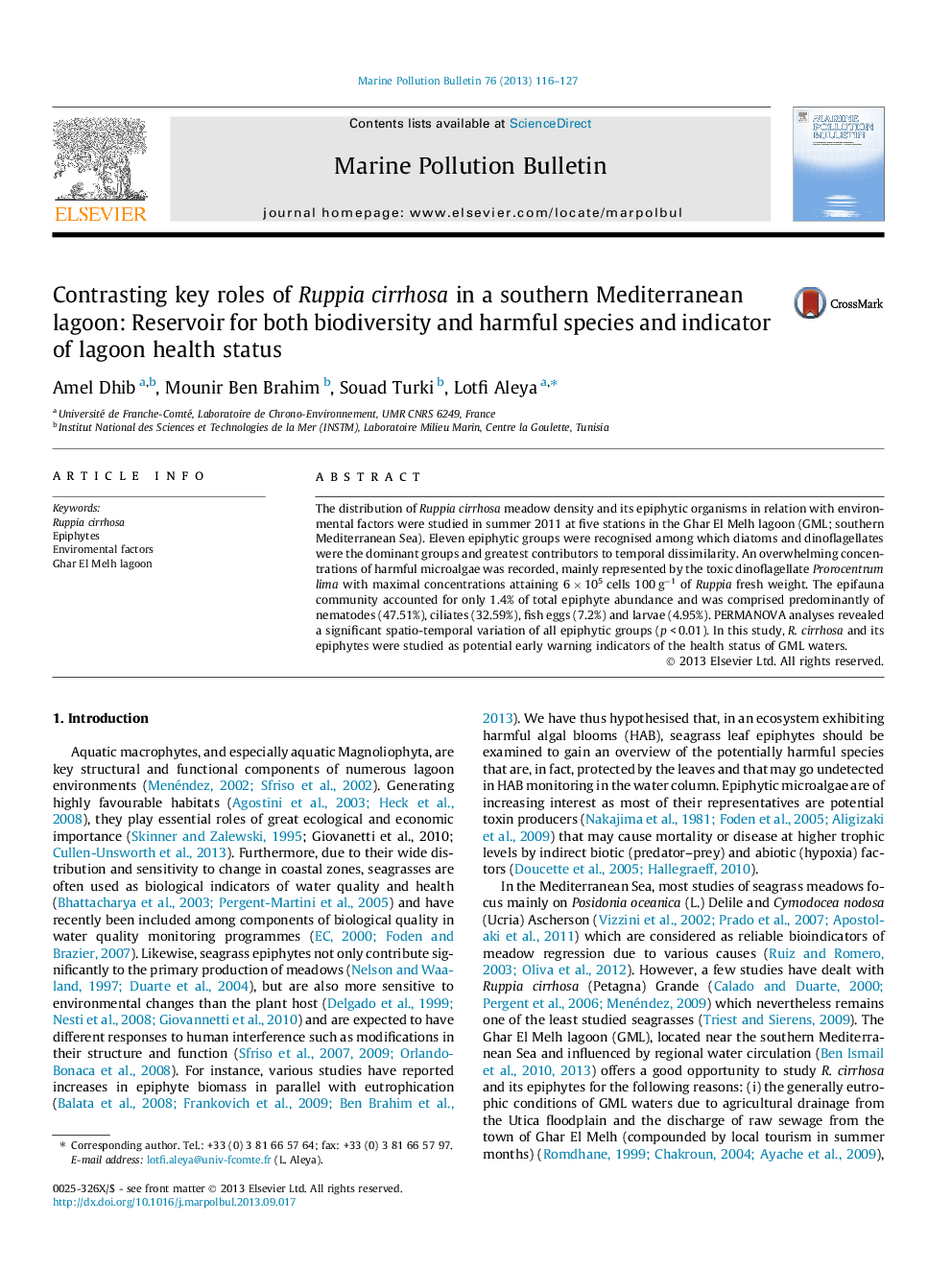| Article ID | Journal | Published Year | Pages | File Type |
|---|---|---|---|---|
| 6359079 | Marine Pollution Bulletin | 2013 | 12 Pages |
Abstract
The distribution of Ruppia cirrhosa meadow density and its epiphytic organisms in relation with environmental factors were studied in summer 2011 at five stations in the Ghar El Melh lagoon (GML; southern Mediterranean Sea). Eleven epiphytic groups were recognised among which diatoms and dinoflagellates were the dominant groups and greatest contributors to temporal dissimilarity. An overwhelming concentrations of harmful microalgae was recorded, mainly represented by the toxic dinoflagellate Prorocentrum lima with maximal concentrations attaining 6 Ã 105 cells 100 gâ1 of Ruppia fresh weight. The epifauna community accounted for only 1.4% of total epiphyte abundance and was comprised predominantly of nematodes (47.51%), ciliates (32.59%), fish eggs (7.2%) and larvae (4.95%). PERMANOVA analyses revealed a significant spatio-temporal variation of all epiphytic groups (p < 0.01). In this study, R. cirrhosa and its epiphytes were studied as potential early warning indicators of the health status of GML waters.
Related Topics
Physical Sciences and Engineering
Earth and Planetary Sciences
Oceanography
Authors
Amel Dhib, Mounir Ben Brahim, Souad Turki, Lotfi Aleya,
